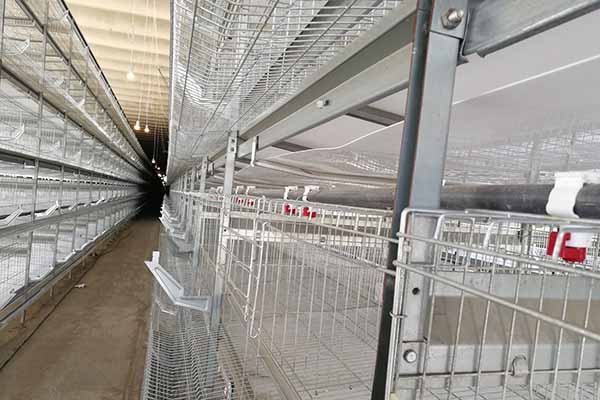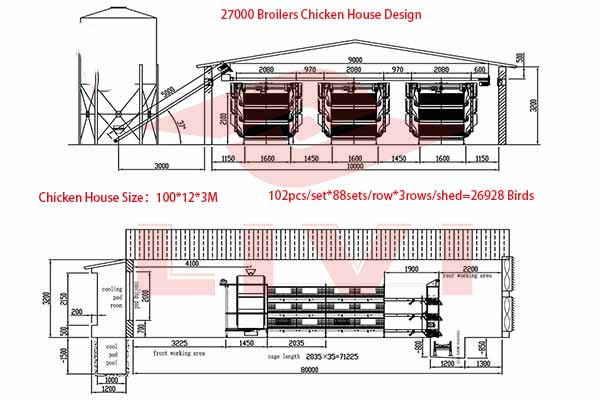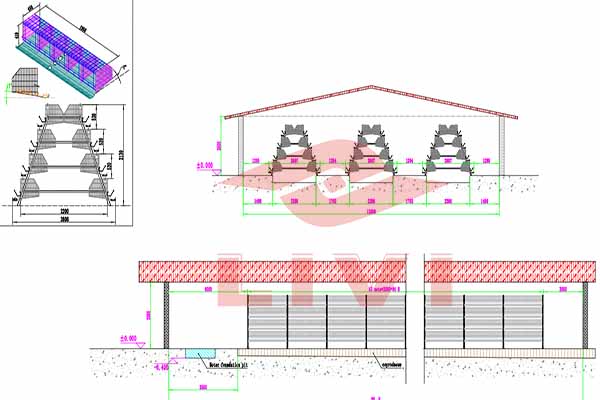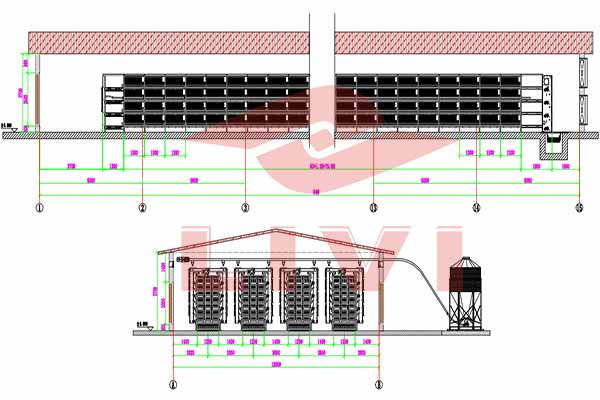Layer Cage Equipment for 100,000 Chickens: A Comprehensive Guide for Kenyan Poultry Farmers
Understanding the Needs of Large Scale Chicken Farming in Kenya
In Kenya, the poultry industry is rapidly growing, with an increasing demand for high-quality layer cage equipment. For farmers looking to establish or expand their operations, understanding the requirements for housing 100,000 chickens is crucial. This article provides a detailed overview of the essential equipment and considerations for setting up a large-scale chicken farm.
- 1. Layer Cages
- 2. Feeding Systems
- 3. Watering Systems
- 4. Environmental Control
- 5. Health and Biosecurity Measures
1. Layer Cages
Layer cages are the foundation of any chicken farm. They provide a safe and hygienic environment for the hens to lay eggs. When selecting layer cages for 100,000 chickens, consider the following:
- Size and Space: Ensure each cage is large enough to accommodate the chickens comfortably. A general rule is 0.5 square meters per bird.
- Quality: Invest in high-quality steel cages that can withstand the weight of the chickens and last for years.
- Ease of Cleaning: Choose cages with easy-to-clean surfaces and designs that facilitate regular maintenance.
In Kenya, the ideal layer cage for 100,000 chickens would be a system with approximately 200,000 cages, each housing 500 birds.
2. Feeding Systems
A reliable feeding system is essential for the health and productivity of your chickens. Consider the following factors:
- Automated Feeding: Automated feeding systems ensure consistent and efficient feeding, reducing the risk of overeating or underfeeding.
- Quality Feed: Use high-quality feed that meets the nutritional needs of your chickens.
- Capacity: Ensure the feeding system can handle the capacity of 100,000 chickens, with a backup plan in case of system failure.
In Kenya, an automated feeding system with a capacity of 500 kg per hour would be suitable for a farm with 100,000 chickens.
3. Watering Systems</h.swing-h2
Water is crucial for the health and well-being of chickens. When selecting a watering system, consider the following:
- Access: Ensure each chicken has easy access to fresh water at all times.
- Flow Rate: The system should provide a consistent flow rate to meet the water requirements of 100,000 chickens.
- Sanitation: Choose a system that is easy to clean and maintain to prevent the spread of diseases.
In Kenya, a watering system with a flow rate of 500 liters per hour would be sufficient for a farm with 100,000 chickens.
4. Environmental Control
Maintaining an optimal environment is crucial for the health and productivity of your chickens. Consider the following:
- Temperature: Ensure the chickens are kept at a constant temperature between 18-22°C.
- Humidity: Maintain a humidity level of 50-70% to prevent respiratory diseases.
- Airflow: Provide adequate ventilation to ensure a fresh and healthy environment.
In Kenya, an environmental control system with temperature and humidity sensors, along with automated controls, would be ideal for a farm with 100,000 chickens.
5. Health and Biosecurity Measures
To ensure the success of your chicken farm, it is essential to implement health and biosecurity measures:
- Regular Health Checks: Schedule regular health checks for your chickens to detect and treat diseases early.
- Sanitation: Maintain a clean and hygienic environment to prevent the spread of diseases.
- Biosecurity: Implement biosecurity measures, such as limiting access to the farm and controlling the movement of people and animals.
In conclusion, setting up a layer cage equipment system for 100,000 chickens in Kenya requires careful planning and consideration of various factors. By investing in high-quality equipment, implementing efficient systems, and maintaining proper health and biosecurity measures, you can ensure the success of your poultry farm.
For more information on layer cage equipment for 100,000 chickens in Kenya, feel free to leave a comment below or contact us for a free, detailed chicken farm design and equipment quote.





